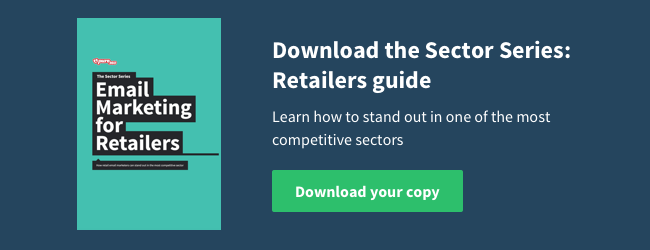Companies are used to marketing in a very traditional way – throwing out a bunch of facts about why their customers should choose them above their competitors. But in a world filled with thousands of similar messages, does this type of marketing really get cut-through?
We’ve taken inspiration from Simon Sinek’s book Start with Why: How Great Leaders Inspire Everyone to Take Action to argue the case for why changing the structure of your marketing message can create more powerful connections with your audience.
We take a look at how to put Sinek’s theory into practice – using it to create deeper connections with your potential customers, grow loyalty and inspire better marketing campaigns.
Joining the golden circle
Sinek looked at what makes inspiring brands successful and found his answer in the way they market themselves. He termed his discovery ‘The Golden Circle’ and created a diagram to explain the three subliminal questions brands and consumers try and answer during the purchasing process – the why, how and what.
Sinek states that the difference between some brands and others is simply the order in which these questions are answered – most people work from the outside in, stating what it is they do then how they do. Some even fail to answer why it is they do what they do.
‘The Golden Circle’ suggests iconic brands such as Apple, Nike or Virgin Atlantic simply answer these questions in the reverse order to traditional marketers by answering the ‘why’ before the ‘what’ or the ‘how’
Leading with your belief
By starting with the why first, brands create inspiring propositions which make deeper connections with the audience compared to when they simply outline the functional stuff first. But don’t just take our word for it, take a look at real-life examples of how stating your belief first can create more powerful marketing messages.
Example 1:
An example of a marketing message which addresses what and how but not why:
“We make great computers. They’re beautifully designed and simple to use.”
Example 2:
An example of a marketing message which addresses the why and how:
“Everything we do, we believe is challenging the status quo. We believe in thinking differently. The way we challenge the status quo is by making our products beautifully designed and easy to use.”
Sinek argues that the last message is more powerful – and I’d have to agree. By choosing to lead with their belief, their message stands out from the standard benefits-led method in the first example and creates a deeper emotional connection with the audience.
Connecting decisions to emotion
It’s not simply structure that make these messages different – the fact is that emotions control decisions. It’s estimated that 90% of purchasing decisions are based on an emotional reaction (CMO, 2014), so when an audience is invited to feel something rather than just read soulless statements, they’re more likely to buy.
By marketing the company’s beliefs before their products or services, brands attract people to them who share similar values. They bond over a mutual understanding of the world and it’s this bond that creates loyalty. Think about Nike and their infamous ‘Just do it’ slogan. These iconic three words were focused around their belief that anyone, of any athletic ability, could go out there and perform – whatever their achievements or aim (Complex, 2015). This attitude resonates with people who share this belief, who will subsequently choose the brand above the product – trusting whatever it produces will share their values.
So next time you want to make a deeper connection with your audience start by telling them why it is you do what you do. When you market from the why you create a point of difference, nurture loyalty and influence more purchasing decisions than simply talking about the what.





